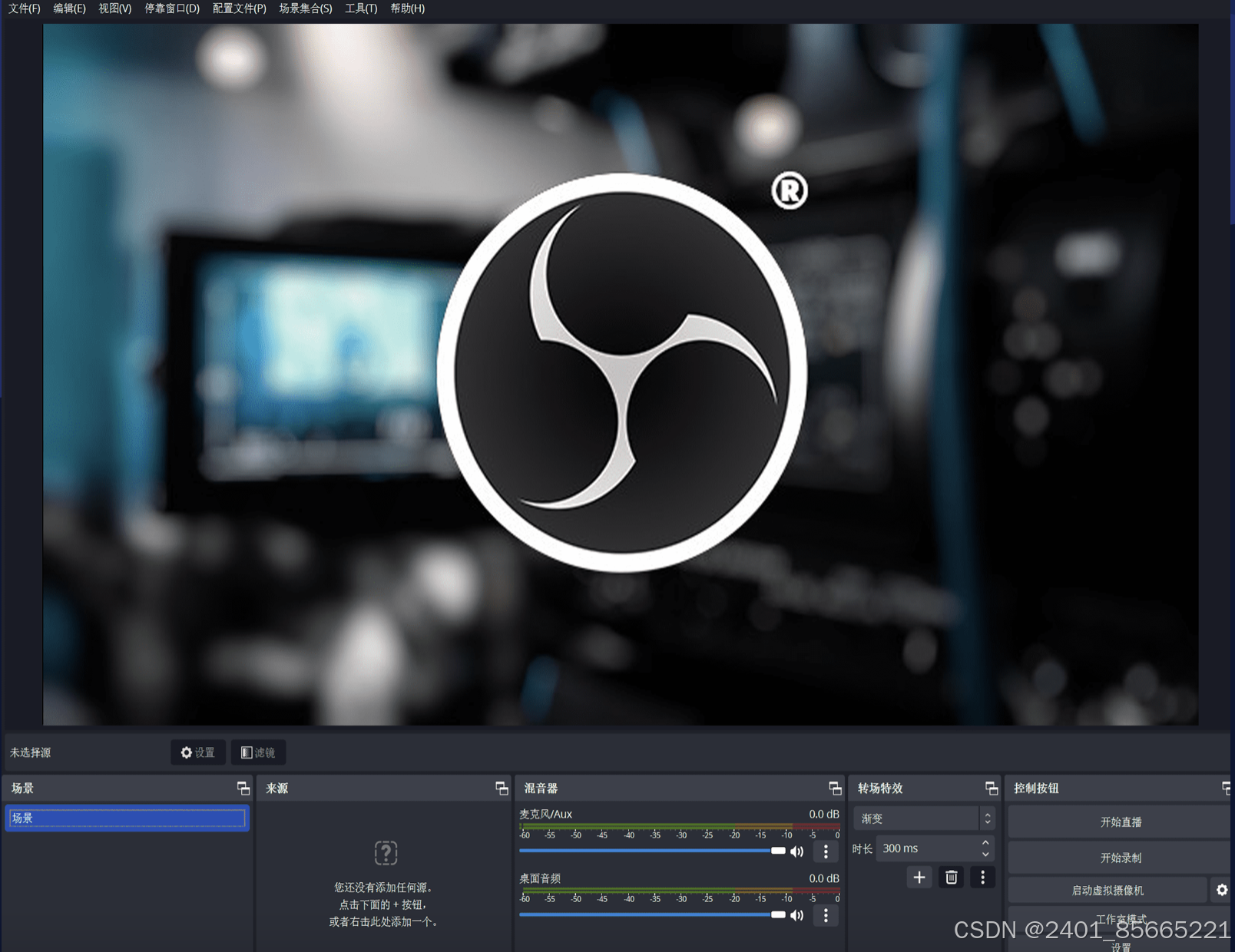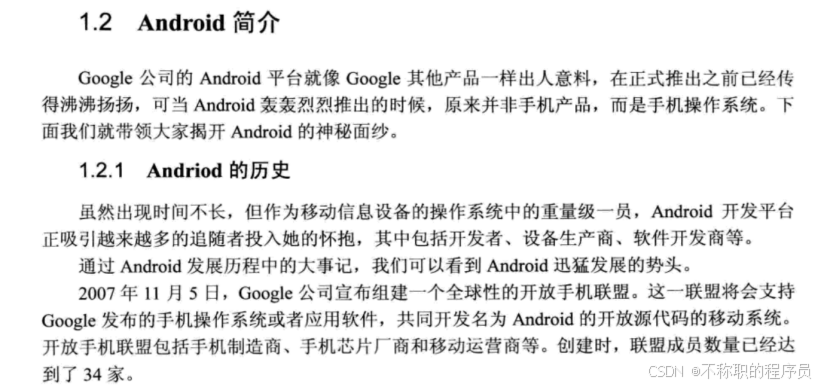Chapter14 非真实感渲染 NPR
一、卡通风格渲染 1.渲染轮廓线 2.添加高光 3.ToonShadingMat 二、素描风格渲染
特点:物体被黑色线条描边,分明的明暗变化等 方法:其中之一就是 基于色调的着色技术 方法
基于观察角度和表面法线 的轮廓线渲染:使用视角方向和表面法线的点乘结果来得到轮廓线信息,快但效果不好过程式几何 轮廓线渲染:使用两个Pass,第一个Pass渲染背面的面片,使用某些技术让其轮廓可见,第二个Pass再渲染正面面片。快速,但不适合立方体这样平整的模型基于图像处理 的轮廓线渲染:12章13章介绍的,适用于所有类型的模型,但一些深度和法线变化小的就不太行(类似于桌上的纸张)基于轮廓边检测 的轮廓线渲染:可以控制轮廓线的风格渲染,动画连贯性差
检测一条边是否为轮廓线,只需检测这条边相邻的两个三角形面片是否满足:
(
n
0
⋅
v
>
0
)
≠
(
n
1
⋅
v
>
0
)
(n_{0} \cdot v >0) \neq (n_{1} \cdot v >0)
( n 0 ⋅ v > 0 ) = ( n 1 ⋅ v > 0 )
n
0
n_{0}
n 0
n
1
n_{1}
n 1
v
v
v 本质在于检查两个三角形是否一个朝正面一个朝背面 混合以上方法的轮廓线渲染 本节使用: 过程式几何 轮廓线渲染
第一个Pass中会使用轮廓线颜色渲染整个背面面片,并在是视角空间 下把模型顶点 沿着法线方向向外扩张一段距离 —— 让背部轮廓线可见 viewPos = viewPos + viewNormal * _Outline 但是对于内凹的模型,就可能会有背部轮廓遮挡正面的情况 在扩张之前,先对顶点法线z分量进行处理,使它们等于一个定值,再把法线归一化后再扩张 —— 背面更加扁平化,降低了遮挡正面的可能性 viewNormal. z = - 0.5 ;
viewNormal = normalize ( viewNormal) ;
viewPos = viewPos + viewNormal * _Outline;
卡通风格的高光是一块纯色区域 Blinn-Phong 模型实现高光:float spec = pow(max(0,dot(normal, halfDir)),_Gloss); 卡通渲染:要把
n
o
r
m
a
l
⋅
h
a
l
f
D
i
r
normal \cdot halfDir
n or ma l ⋅ ha l f D i r float = dot ( worldNormal, worldHalfDir) ;
spec = step ( threshold, spec) ;
在上方法的基础上进行抗锯齿平滑处理。
使用了CG的smoothstep函数 w是一个很小的值,当spec-threshold < -w 返回0,spec-threshold > w 时返回1,否则在0-1之间插值,实现平滑效果 float = dot ( worldNormal, worldHalfDir) ;
spec = lerp ( 0 , 1 , smoothstep ( - w, w, spec- threshold) ) ;
Properties
{
_Color ( "Color" , Color) = ( 1, 1, 1, 1) ( "Main Tex" , 2D ) = "white" { }
_Ramp ( "Ramp Texture" , 2D ) = "white" { }
_Outline ( "Outline" , Range ( 0 , 1 ) ) = 0.1
_OutlineColor ( "Outline Color" , Color) = ( 0, 0, 0, 1) _Specular ( "Specular" , Color) = ( 1, 1, 1, 1) _SpecularScale ( "Specular Scale" , Range ( 0 , 0.1 ) ) = 0.01
}
Pass
{
NAME "OUTLINE"
Cull Front
CGPROGRAM
#pragma vertex vert
#pragma fragment frag
#include "UnityCG.cginc"
float ;
fixed4 _OutlineColor;
struct a2v {
float4 vertex: POSITION;
float3 normal: NORMAL;
} ;
struct v2f {
float4 pos : SV_POSITION;
} ;
这个pass只渲染背面的三角形面片,设置Cull Front 把正面三角形剔除 v2f vert ( a2v v)
{
v2f o;
float4 pos = mul ( UNITY_MATRIX_MV, v. vertex) ;
float3 normal = mul ( ( float3x3) UNITY_MATRIX_IT_MV, v. normal) ;
normal. z = - 0.5 ;
pos = pos + float4 ( normalize ( normal) , 0 ) * _Outline;
o. pos = mul ( UNITY_MATRIX_P, pos) ;
return o;
}
float4 frag ( v2f i) : SV_Target
{
return float4 ( _OutlineColor. rgb, 1 ) ;
}
在顶点着色器中,先把顶点和法线变换到视角空间下 ,这是为了让描边可以在观察空间达到最好的效果 把法线z分量设为定量 把法线归一化后再向外扩张,得到扩张后的顶点坐标 pos 再把顶点变换到裁剪空间 片元着色器只需要用轮廓线颜色 渲染整个背面就好 Pass{
Tags { "LightMode" = "ForwardBase" }
Cull Back
.. .. ..
struct a2v {
float4 vertex : POSITION;
float3 normal : NORMAL;
float4 texcoord : TEXCOORD0;
float4 tangent : TANGENT;
} ;
struct v2f {
float4 pos : POSITION;
float2 uv : TEXCOORD0;
float3 worldNormal : TEXCOORD1;
float3 worldPos : TEXCOORD2;
SHADOW_COORDS ( 3 )
} ;
#pragma multi_compile_fwdbase:用途是告诉Unity编译器为不同的光照模型和阴影类型生成多个变体(variants)的Shader,使得Shader能够更好地适应前向渲染路径下的不同光照和阴影条件float4 frag ( v2f i) : SV_Target
{
fixed3 worldNormal = normalize ( i. worldNormal) ;
fixed3 worldLightDir = normalize ( UnityWorldSpaceLightDir ( i. worldPos) ) ;
fixed3 worldViewDir = normalize ( UnityWorldSpaceViewDir ( i. worldPos) ) ;
fixed3 worldHalfDir = normalize ( worldLightDir+ worldViewDir) ;
fixed4 c = tex2D ( _MainTex, i. uv) ;
fixed3 albedo = c. rgb * _Color. rgb;
fixed3 ambient = UNITY_LIGHTMODEL_AMBIENT. xyz * albedo;
UNITY_LIGHT_ATTENUATION ( atten, i, i. worldPos) ;
fixed diff = dot ( worldNormal, worldLightDir) ;
diff = ( diff * 0.5 + 0.5 ) * atten;
fixed3 diffuse = _LightColor0. rgb * albedo * tex2D ( _Ramp, float2 ( diff, diff) ) . rgb;
fixed spec = dot ( worldNormal, worldHalfDir) ;
fixed w = fwidth ( spec) * 2.0 ;
fixed3 specular = _Specular. rgb * lerp ( 0 , 1 , smoothstep ( - w, w, spec + _SpecularScale - 1 ) ) * step ( 0.0001 , _SpecularScale) ;
return fixed4 ( ambient + diffuse + specular, 1.0 ) ;
}
首先计算了光照模型中所需的各个方向矢量,并进行归一化处理 计算了材质反射率 albedo(基础颜色)和环境光照 ambient UNITY_LIGHT_ATTENUATION(atten,i,i.worldPos);:计算当前世界坐标下的阴影值又计算了 HalfLambert 漫反射系数 diff,并与阴影值 atten 相乘 用漫反射系数对渐变纹理 _Ramp 采样 又计算了高光反射,与14.1.2方法一致,使用 fwidth 函数 对高光区域的边界进行抗锯齿处理 计算高光时还使用了step(0.0001, _SpecularScale),因为为了在_SpecularScale 为0时,可以完全消除高光反射的光照 本节中不考虑多级渐变纹理的生成,直接使用6张像素纹理进行渲染 首先在顶点着色器阶段计算 逐顶点光照 ,根据光照结果来决定6张纹理的权重,并传递给片元着色器 在片元着色器中根据权重来混合6张图的采样结果
Properties
{
_Color ( "Color Tint" , Color) = ( 1, 1, 1, 1) ( "Tile Factor" , Float) = 1
_Outline ( "Outline" , Range ( 0 , 1 ) ) = 0.1
_Hatch0 ( "Hatch 0" , 2D ) = "white" { }
_Hatch1 ( "Hatch 1" , 2D ) = "white" { }
_Hatch2 ( "Hatch 2" , 2D ) = "white" { }
_Hatch3 ( "Hatch 3" , 2D ) = "white" { }
_Hatch4 ( "Hatch 4" , 2D ) = "white" { }
_Hatch5 ( "Hatch 5" , 2D ) = "white" { }
}
_Color 用于控制模型的颜色 _TileFactor 是纹理的平铺系数,数越大,模型上的线条越密 _Hatch0-_Hatch5 是渲染时使用的六张纹理 SubShader
{
Tags { "RenderType" = "Opaque" "Queue" = "Geometry" }
UsePass "Custom/Chapter14-ToonShading/OUTLINE"
struct a2v {
float4 vertex : POSITION;
float3 normal : NORMAL;
float4 tangent : TANGENT;
float2 texcoord : TEXCOORD0;
} ;
struct v2f {
float4 pos : SV_POSITION;
float2 uv : TEXCOORD0;
fixed3 hatchWeights0 : TEXCOORD1;
fixed3 hatchWeights1 : TEXCOORD2;
float3 worldPos : TEXCOORD3;
SHADOW_COORDS ( 4 )
} ;
由于声明了六张纹理,所以需要6个混合权重,所以存储在两个fixed3 变量 hatchWeights0 和 hatchWeights1 中 为了添加阴影效果,还声明了 worldPos 变量,并使用 SHADOW_COORDS(4) 声明了阴影采样坐标 v2f vert ( a2v v)
{
v2f o;
o. pos = UnityObjectToClipPos ( v. vertex) ;
o. uv = v. texcoord. xy * _TileFactor;
fixed3 worldLightDir = normalize ( WorldSpaceLightDir ( v. vertex) ) ;
fixed3 worldNormal = UnityObjectToWorldNormal ( v. normal) ;
fixed diff = max ( 0 , dot ( worldLightDir, worldNormal) ) ;
o. hatchWeights0 = fixed3 ( 0 , 0 , 0 ) ;
o. hatchWeights1 = fixed3 ( 0 , 0 , 0 ) ;
float = diff * 7.0 ;
if ( hatchFactor > 6.0 ) {
} else if ( hatchFactor > 5.0 ) {
o. hatchWeights0. x = hatchFactor - 5.0 ;
} else if ( hatchFactor > 4.0 ) {
o. hatchWeights0. x = hatchFactor - 4.0 ;
o. hatchWeights0. y = 1.0 - o. hatchWeights0. x;
} else if ( hatchFactor > 3.0 ) {
o. hatchWeights0. y = hatchFactor - 3.0 ;
o. hatchWeights0. z = 1.0 - o. hatchWeights0. y;
} else if ( hatchFactor > 2.0 ) {
o. hatchWeights0. z = hatchFactor - 2.0 ;
o. hatchWeights1. x = 1.0 - o. hatchWeights0. z;
} else if ( hatchFactor > 1.0 ) {
o. hatchWeights1. x = hatchFactor - 1.0 ;
o. hatchWeights1. y = 1.0 - o. hatchWeights1. x;
} else {
o. hatchWeights1. y = hatchFactor;
o. hatchWeights1. z = 1.0 - o. hatchWeights1. y;
}
o. worldPos = mul ( unity_ObjectToWorld, v. vertex) . xyz;
TRANSFER_SHADOW ( o) ;
return o;
}
先对顶点进行基本坐标变换 使用_TileFactor 得到纹理采样坐标 在计算6张纹理的混合权重之前,要先进行 逐顶点光照 使用世界空间下的光照方向和法线方向得到漫反射系数 diff 把diff 缩放到 [0,7]之间,得到 hatchFactor 把[0,7] 区间均匀划分为7个子区间,通过判断 hatchFactor 所处的子区间来计算对应的纹理权重 fixed4 frag ( v2f i) : SV_Target
{
fixed4 hatchTex0 = tex2D ( _Hatch0, i. uv) * i. hatchWeights0. x;
fixed4 hatchTex1 = tex2D ( _Hatch1, i. uv) * i. hatchWeights0. y;
fixed4 hatchTex2 = tex2D ( _Hatch2, i. uv) * i. hatchWeights0. z;
fixed4 hatchTex3 = tex2D ( _Hatch3, i. uv) * i. hatchWeights1. x;
fixed4 hatchTex4 = tex2D ( _Hatch4, i. uv) * i. hatchWeights1. y;
fixed4 hatchTex5 = tex2D ( _Hatch5, i. uv) * i. hatchWeights1. z;
fixed4 whiteColor = fixed4 ( 1 , 1 , 1 , 1 ) * ( 1 - i. hatchWeights0. x - i. hatchWeights0. y - i. hatchWeights0. z- i. hatchWeights1. x - i. hatchWeights1. y - i. hatchWeights1. z) ;
fixed4 hatchColor = hatchTex0 + hatchTex1 + hatchTex2 + hatchTex3 + hatchTex4 + hatchTex5 + whiteColor;
UNITY_LIGHT_ATTENUATION ( atten, i, i. worldPos) ;
return fixed4 ( hatchColor. rgb * _Color. rgb * atten, 1.0 ) ;
}
得到每张图的权重后,就可以对其进行纹理映射,得到采样颜色 还计算了留白的权重 (1-i.hatchWeights0.x - i.hatchWeights0.y - i.hatchWeights0.z-i.hatchWeights1.x - i.hatchWeights1.y - i.hatchWeights1.z)





















